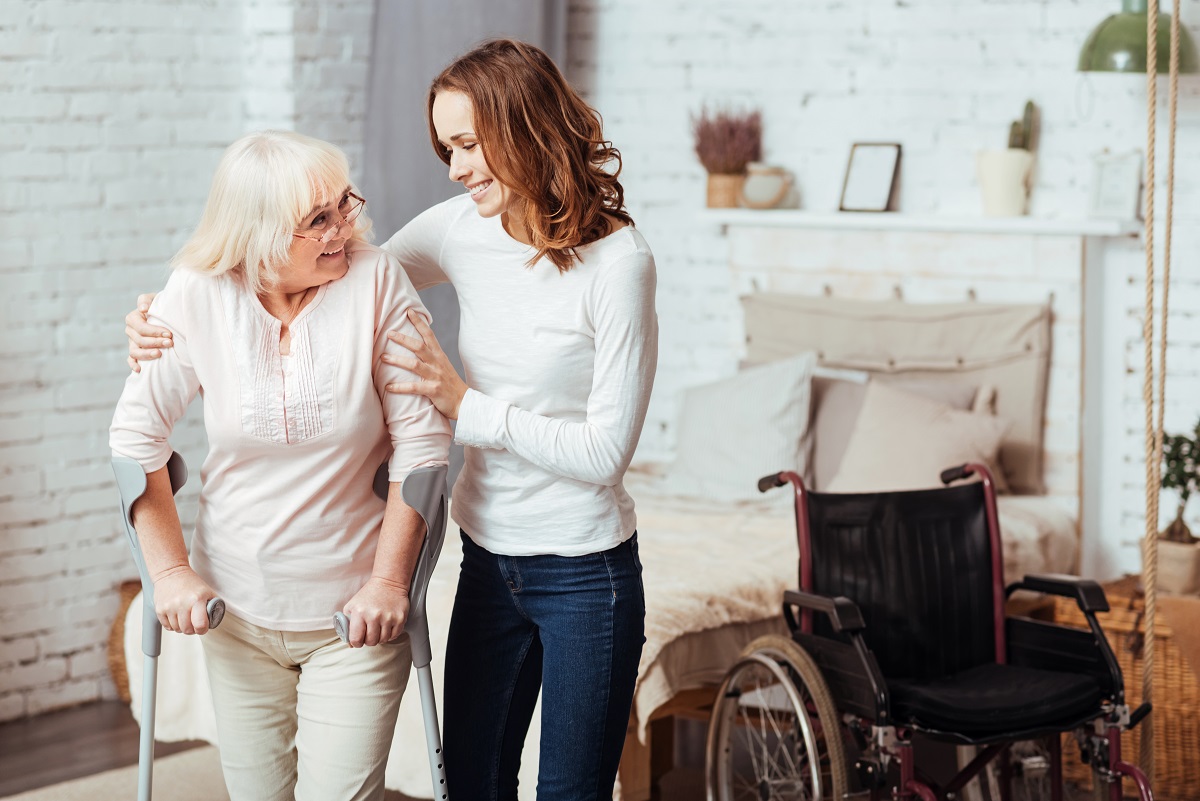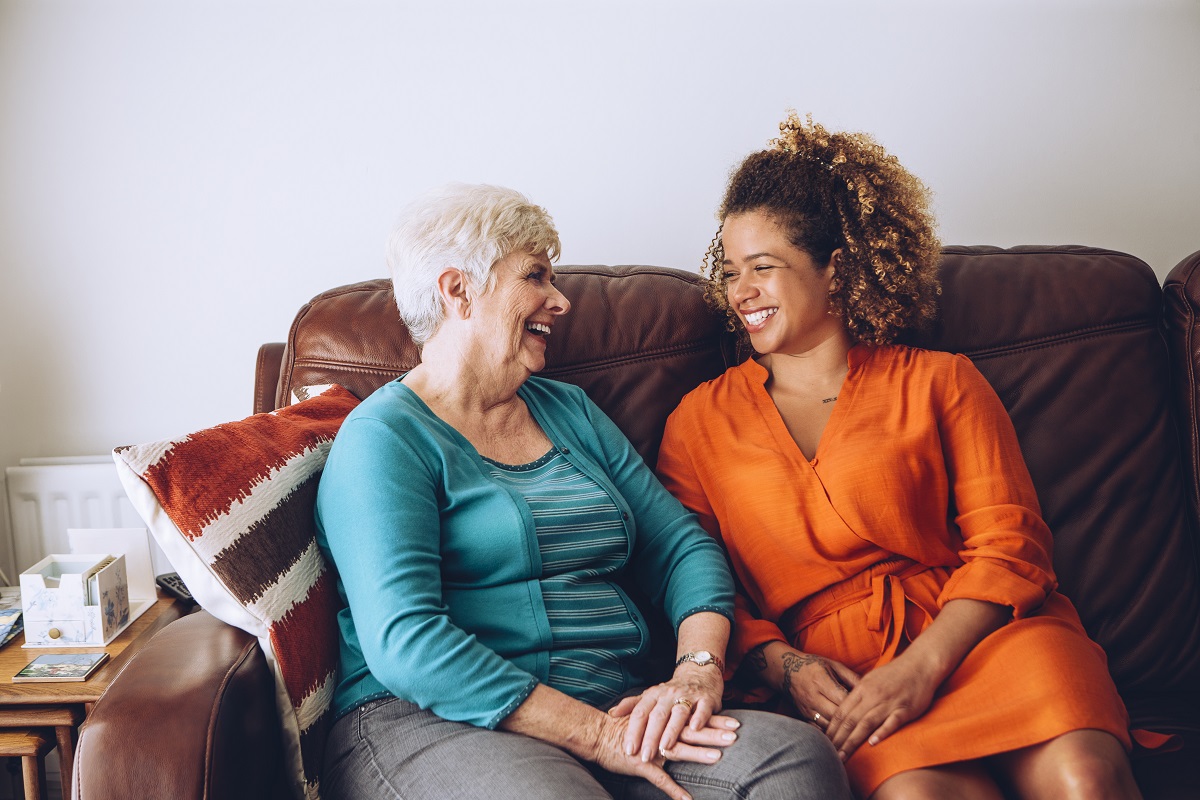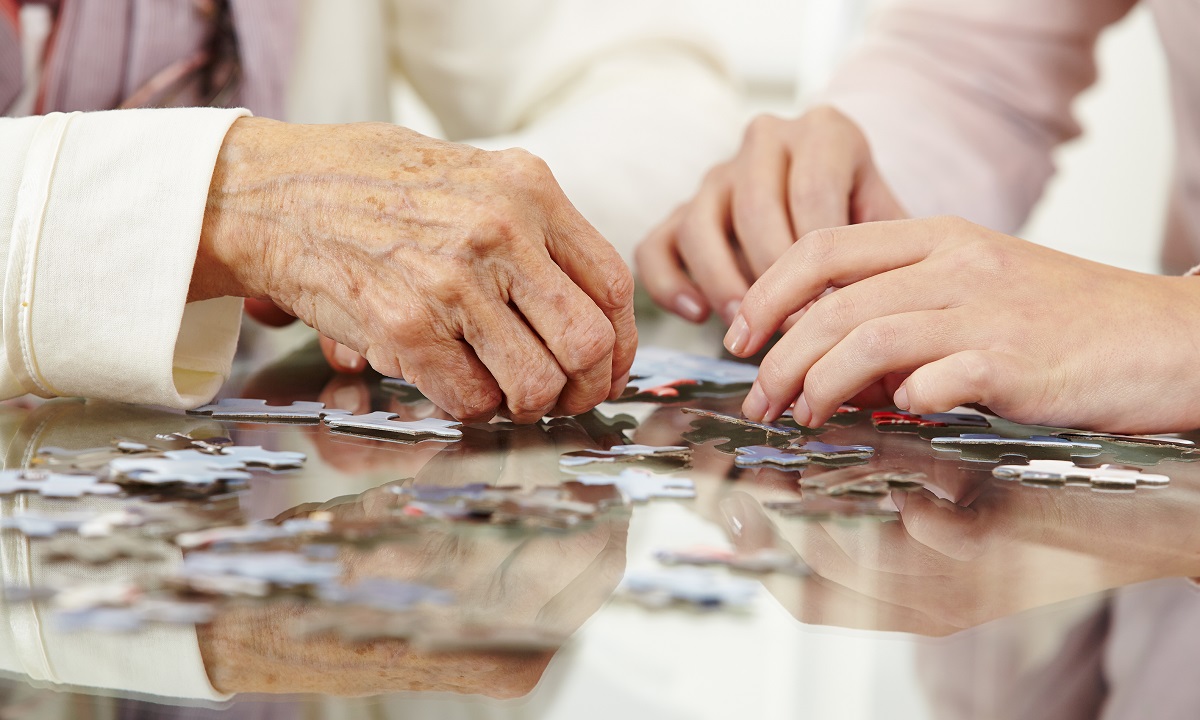Sight loss can have a huge impact on daily life, social contact and mental health and wellbeing – and that’s before dementia is brought into the mix. This blog will talk about what happens to your eyes as you get older, and how this can lead to some common causes of sight loss in older people: cataract, age-related macular degeneration and glaucoma.
The structures inside the eye can be affected as you age. Here’s how the main ones affected and what the knock-on effect is on how you see things:
The cornea
This is kept nice and moist by your tears. As we get older, the composition of our tears can change, which can make it harder for the cornea to stay moist. This can cause quite a bit of discomfort and is known as dry eye. People with dementia may struggle to express this discomfort and will sometimes just rub the eye instead. This problem is easily managed with regular eye drops, but there are lots of different ones and it’s important to get the right type. An optometrist can look at the tear film on the front of the eye and identify what type of eye drop would be best – they can also check there isn’t any dust or dirt that could be causing discomfort as well.
It’s very important to put the eye drops in regularly to keep the eyes comfortable and reduce risk of damage to the front of the eye, but the bottle doesn’t fit in your average pill dispenser or may need to go in the fridge, so can be forgotten.
Need some more hints and tips on putting in eyedrops? Your optometrist can help.
The pupil and iris
The muscles inside the iris that make the pupil bigger get weaker sooner than the ones that make the pupil smaller. Because of this, the pupil becomes smaller as you age. This stops as much light getting into the eye. This means that it’s harder to see in poorer lighting – things go a bit grey.
As we get older, we need much more light to see by, and it’s harder to differentiate between light and dark areas in poor lighting. This is called contrast, and is one reason why you might see some people suggesting that you change the toilet seat, dinner plates and other items used by people living with dementia to be a bolder colour, like bright red.
There is some research suggesting this loss of contrast is compounded for people who have dementia, but we aren’t sure if that is the case for all types of dementia. It may be worth fitting some bulbs of good wattage to make sure their home is well lit, and a dedicated reading lamp can be a help to get lots of light bouncing off the page. Try and avoid gifting second hand books where the pages are discolouring or the print has faded. Maximising contrast can help with navigating rooms too!
Pressure can also start to build up inside the eye, as a result of debris slowly accumulating in this pupil/iris area over time. This is called glaucoma and can usually be controlled with eyedrops and close monitoring by an optometrist. The risk of developing glaucoma increases as you get older, but it can be detected in the early stages through regular eye tests. This is important because if left undetected it can cause irreversible sight loss through gradual onset of tunnel vision:
People who have dementia gradually become less attentive to what’s happening in their peripheral vision, so are unlikely to notice the reduction in their peripheral vision that may be associated with glaucoma. Check out this Teepa Snow video for a good summing up of this: https://www.youtube.com/watch?v=iaUsRa5kNyw
This is why the routine eye test is so important – there are lots of different ways of measuring the pressure inside the eye to detect glaucoma early, before this sight loss occurs. All the advice about eye drops above applies here too!
The lens
This starts to go cloudy as we get older. Light is scattered through the lens instead of passing through cleanly, and this causes lots of blur, and glare from bright lights. This can affect colour perception too, as the lens starts to go rather yellow and hard. This is called cataract.
Monet the painter experienced cataracts as he grew older, and it shows in his art, like this one of a bridge over a lily pond which he painted both before and after developing severe cataracts. While the later one was painted in autumn, it still has a very strong yellow cast.
These paintings give an impression of what living with cataract is like, but there are a number of other things people can have trouble with as cataract advances. If worse in one eye than the other, cataract can affect your ability to use your eyes together to see in 3D and judge distances. ‘Ghost’ double images and halos around lights are commonly reported too, because the light scatters as it passes through the cloudy lens.
People who have dementia can struggle with depth judgements and visual artefacts like glare or shadows, even without having cataracts, so their presence just makes it even more difficult.
Cataract is extremely common amongst people with dementia – more common than amongst older people generally. Eye doctors all over the world are talking about the safest way to do cataract surgery for people with dementia, as it’s normally done under a local anaesthetic and requires the person to stay still.
Some research has shown that poor vision can increase isolation and impairment in activities of daily living, in turn affecting the rate of memory loss. It can also increase the risk of having a fall. So treating causes of poor vision, like cataract, can have more benefits for people with dementia than just improving eyesight.
Cataract can be picked up and monitored as part of a routine eye test.
The optometrist can make a referral to the hospital eye service to talk about options for cataract surgery or other eye problems that may require hospital treatment.
Not everyone who has dementia will be suitable to go through with cataract surgery but it’s always worth talking through these options to see if it might be possible.
It’s actually the hardening of the lens that contributes towards needing reading glasses after age 40 – it becomes less malleable, so it can’t change shape in response to reading near print so easily. Reading glasses help to bend the light enough when entering the eye, to compensate for the lens not being able to do this.
This change in how we see means older people often end up with more than one pair of spectacles, or a single pair of varifocal or bifocal spectacles with different prescription strengths between the upper and lower parts of the lens.
Each person with dementia is individual with regards to their understanding of how their spectacles help them to see. Some may stop wearing their spectacles altogether despite still needing them to see properly. Others may struggle with knowing which pair of spectacles they are supposed to be wearing for a particular task, or whether they should be looking through the upper or lower part of the spectacle lens.
Their optometrist can clarify which pair are to be used for which activity – spectacles can be labelled or colour-coded unobtrusively using a narrow label down the arm of the spectacle frame. Adding their name can help guard against instances of spectacles being unintentionally swapped in care home settings.
Old spectacle frames should be stored away and labelled as an out-of-date prescription to avoid confusion.
The retina
The light-sensitive cells produce lots of waste in the process of sending signals to the brain. This is normally dealt with by a layer of cells underneath – unfortunately the garbage disposal capabilities of this cell layer are affected as we age, and this leads to a build-up of waste. This process contributes to age-related macular degeneration, which damages the part of the retina responsible for detail vision, used to read, recognise faces and watch TV.
Age-related macular degeneration is also more common amongst people with dementia.
As people who have dementia may already be struggling with recognising faces or objects, age-related macular degeneration and the distorted vision that comes with it can compound this issue.
While it’s not possible to treat some types of age-related macular degeneration, there are many ‘low vision aids’ available such as magnifiers and large print materials to help maximise residual vision. Many areas commission a low vision aids service through the hospital eye service or the community optometrists, so ask your optometrist or the RNIB helpline (0303123 9999) for advice.
It can sometimes be difficult to work out which low vision aids might be best for a person with dementia so do make use of loan, trial or free products wherever possible, that can be returned if not suitable.
If you have a loved one with dementia whose eyesight has significantly deteriorated, and they need to be registered as blind or partially sighted by an ophthalmologist, the new Certificate of Visual Impairment form (August 2017 onwards) has a section to indicate a dementia diagnosis. This form is then sent to the local council to help them understand what support is needed.
SHARE
Explore more




